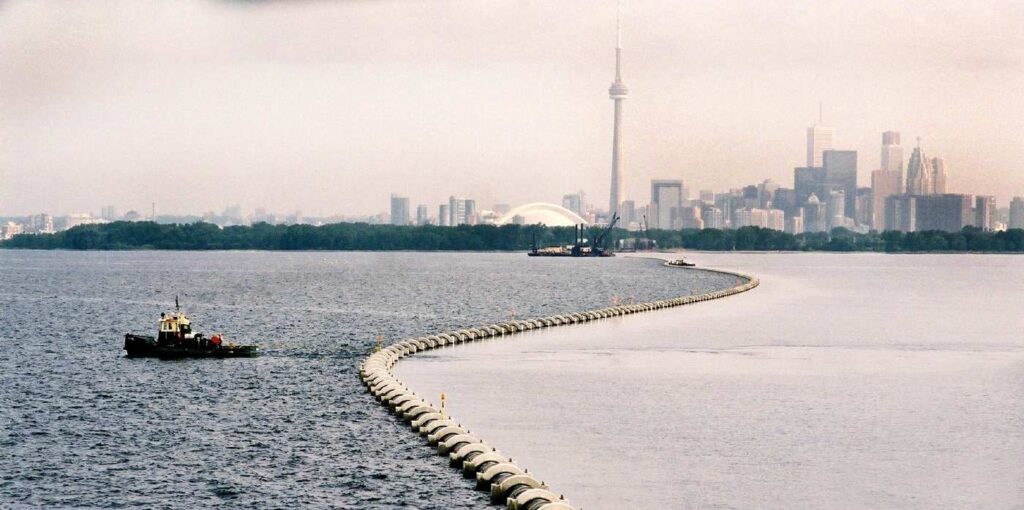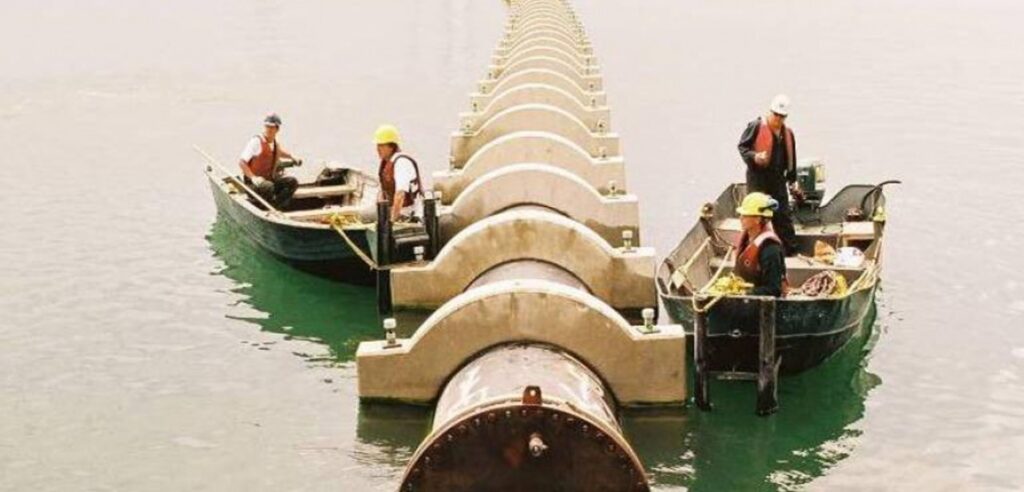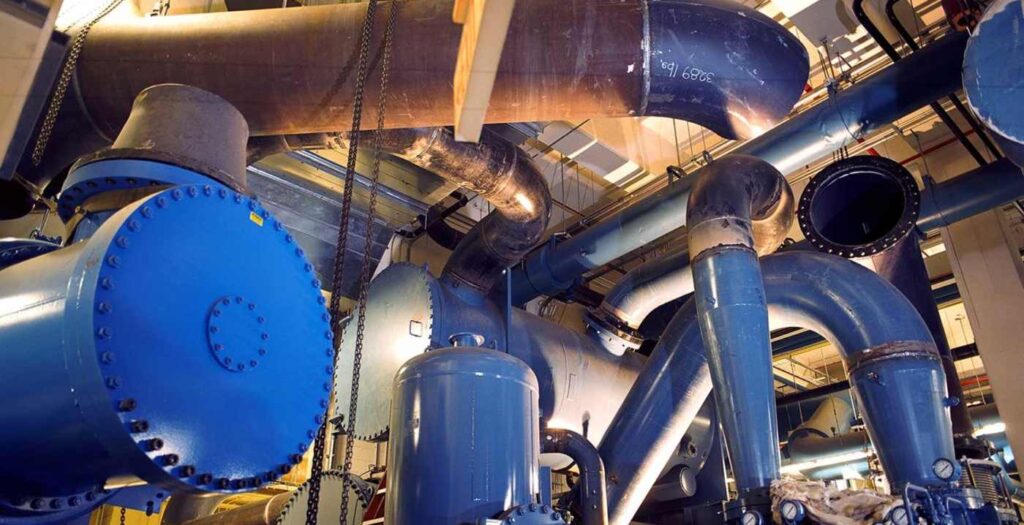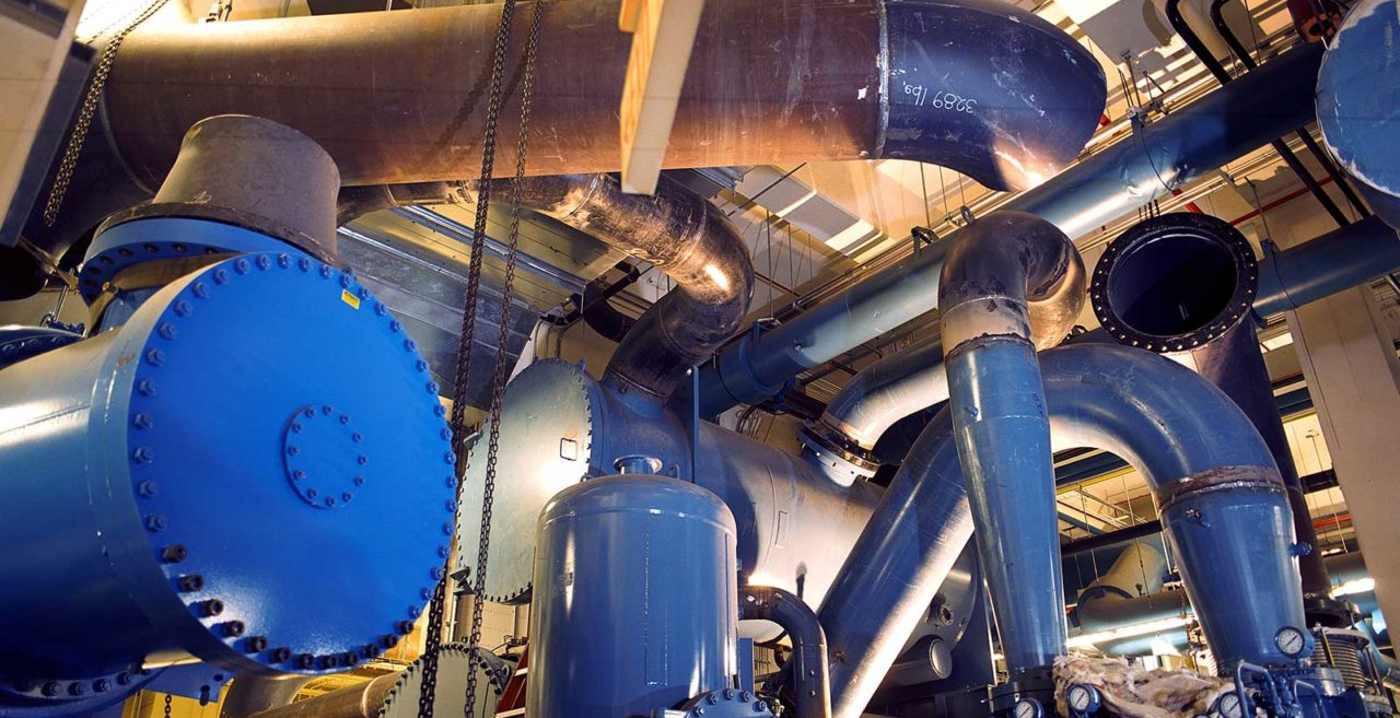
180 Toronto buildings have ditched energy intensive air-conditioning in favor of cooling by pumping frigid waters from the depths of Lake Ontario through pipes in the walls and floors.
These include City Hall, Toronto General Hospital, hotels, data centers, and the Scotiabank Arena, home to the Raptors basketball franchise—altogether the 54 million square feet of real estate saves 90,000 megawatt hours of electricity annually, which is enough to power 25,000 homes.
The Deep Lake Water Cooling (DLWC) system of Toronto is the largest of its kind on Earth.
It relies on three pipes lying 3.5 miles south of the city, 280 feet below the lake, which suck up the 39°F (4°C) water before pumping it to a central station that then sends it through to the buildings. Warm water exiting the building is pumped back into the lake to make up the difference, taking the heat it absorbs with it.
At first the CAD170 million ($133 million) DLWC system, built and managed by Enwave, had a hard time finding clients in the city, but after initial evidence of energy savings (Scotiabank uses 3 million kilowatt hours less energy per year) they have been growing in number ever since.
RELATED: Australian Company Works to Make Energy From Nuclear Fusion – But Without the Fiery Ball of Plasma
A new program to increase capacity in town by an additional 60% testifies to its popularity as a low-carbon cooling system.

“It’s a big investment,” Carlyle Coutinho, president of Enwave, told the Post of the upcoming CAD100 million ($78 million) project. “It would be challenging to keep growing commercially without increasing the baseload.”

Another big expansionary project in Toronto is called The Well. Enwave will create a thermal storage system using a two million gallon tank of cold water from the lake which can store energy at night during off-peak times, easing strain on the electricity grid and reducing costs.
This, the company says, will open the door to another 17 million square feet of real estate.
DLWC isn’t the only method of cooling buildings via water; the other involves evaporating water using large tanks as a means of expelling heat. However this leads to mass water usage, and DLWC can keep 220 million gallons of water in the lake, in the pipes, or in the ground, compared to evaporative cooling.
DLWC isn’t something every city or building has access to, but some buildings, like the million square foot HSBC Headquarters in Hong Kong, is cooled via seawater instead.
POWER UP Those Feeds With This Green News…




















